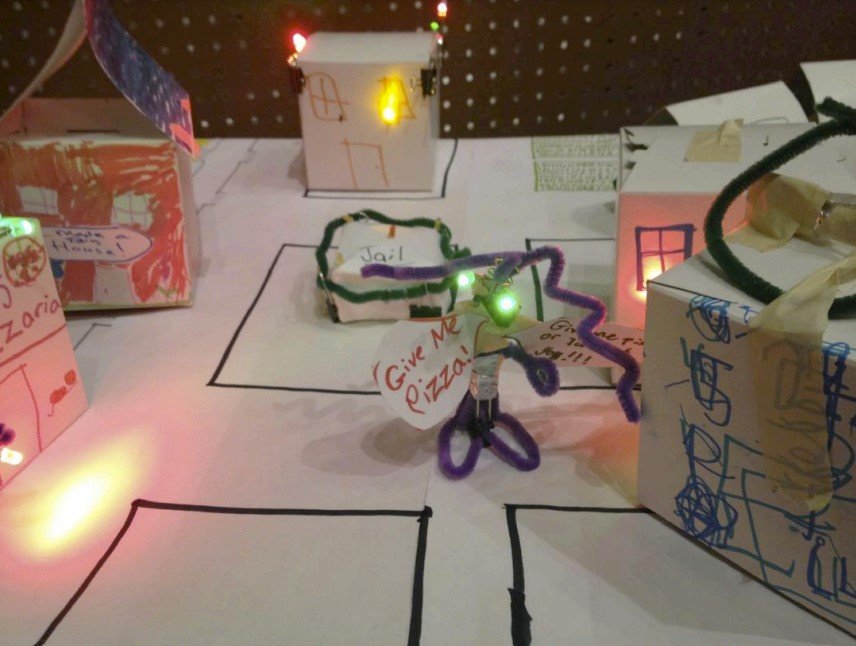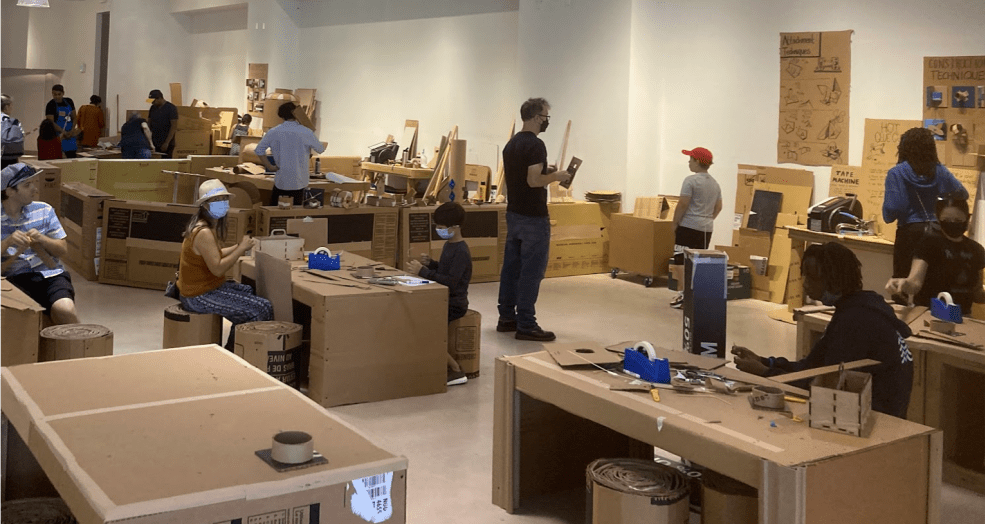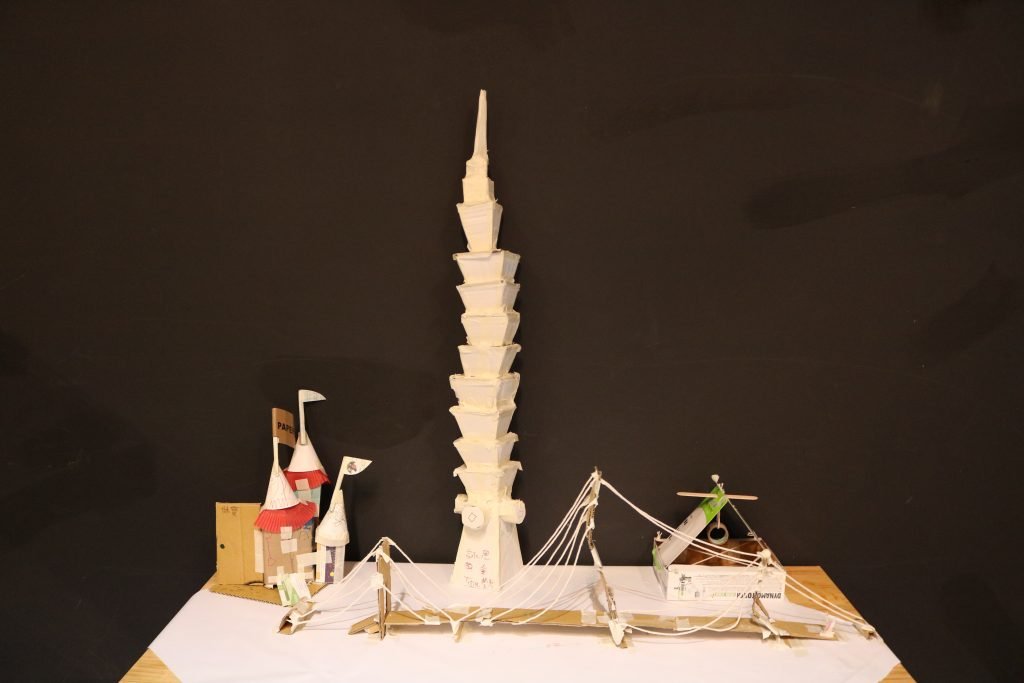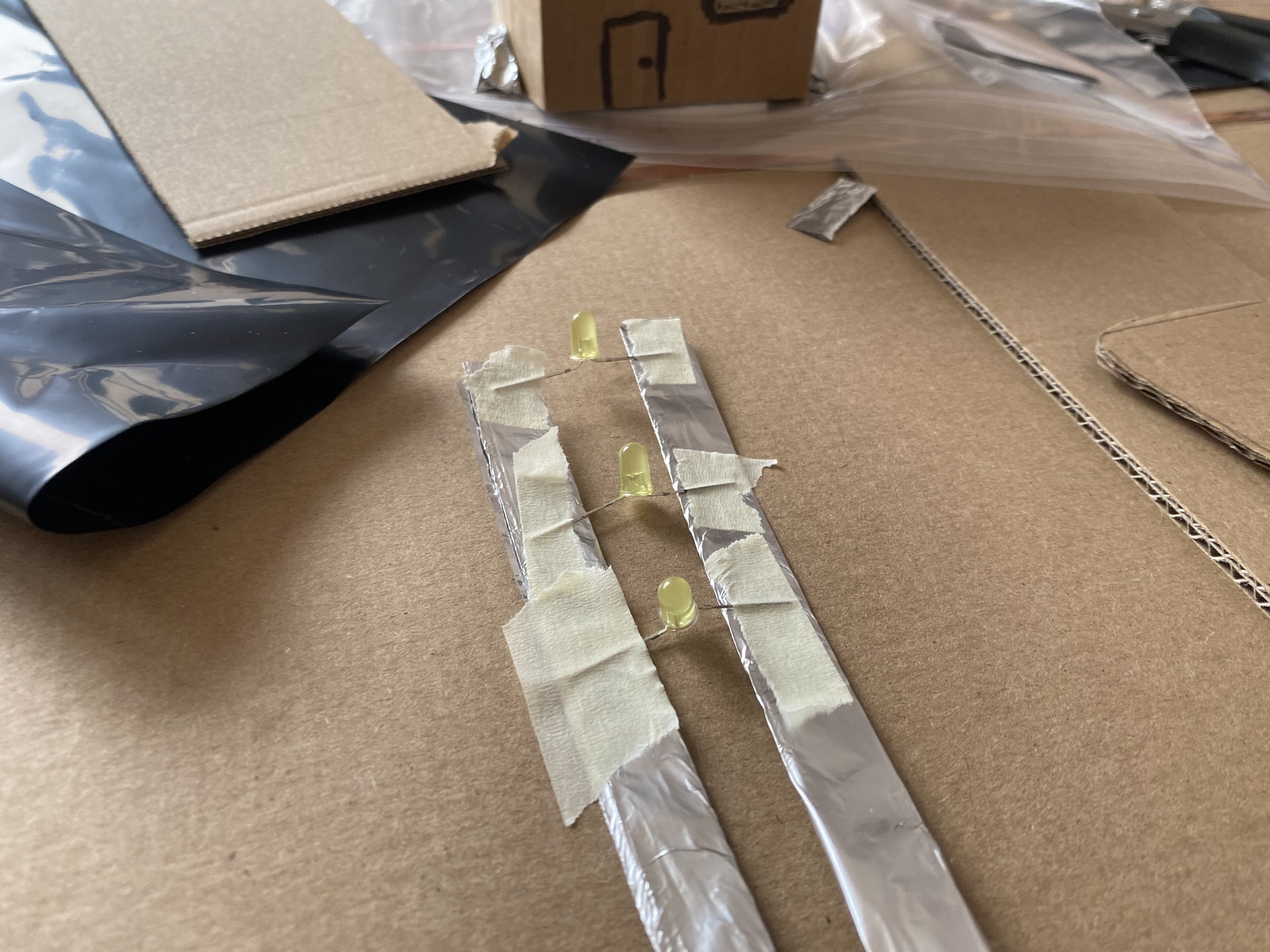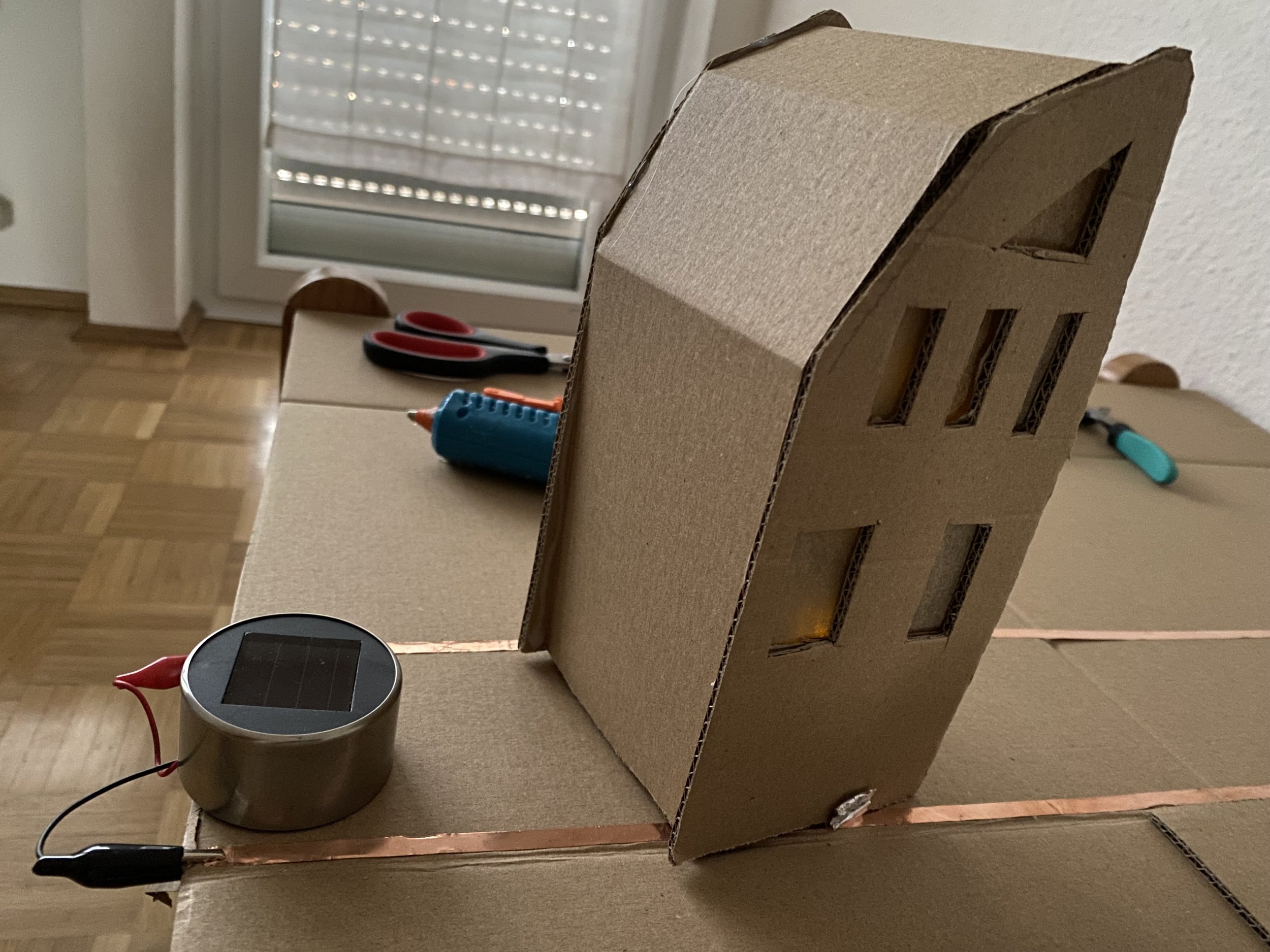Circuit Cities Inspirations and Prototypes
LEGO playful museum network partners have been experimenting with learner-created city-scapes using materials like paper, cardboard, alligator clips and LEDs. I’m excited about this potential TIPs (tinkering inventive playset) exploration because it combines two engaging explorations with lots of potential for new ideas and discoveries while adding in a collaborative element.
I’ve been inspired by different versions of this prompt that I have seen in the past including the “Happy City” at New York Hall of Science, a cardboard wonderland at the ReDiscover center in Santa Monica and experiments combining urban planning and tinkering projects at the National Taiwan Science Education Center.
Playful museum network partners at Connecticut Science Center, Boston Children’s Museum and Discovery Place in North Carolina have shared recent experiments with this theme with our online community. It’s been really nice to see their experiments building physical constructions as examples and testing the activity with visitors.
The cardboard construction element of this activity takes inspirations from artists like Ana Serrano and the duo Isabel and Alfredo Aquilizan. As well, the work of the Cardboard Institute of Technology provides lots of great ideas and possibilities for the creation of a recycled city-scape. I really like how in all three of these examples the buildings have individual character but also are clearly part of a unified collective design.
I’m thinking about how new and interesting supplies can be added to the core materials set for this project. One possibility comes from an art piece by K-Fai Steele called “Tickytown”. It uses a pressure sensitive material called velostat to make a light-up flea city on a dog’s back more interactive. I also appreciate how the city theme becomes more engaging and whimsical with a little twist to the narrative.
I got some velostat online and used this instructables tutorial as the guide for a little cardboard switch for a larger scale city with the same effect. I’m interested to create a “electric grid” with copper tape so that instead of needing to use batteries on each cardboard building, they can be all connected to the same power supply. The pressure switch was pretty fun and I can imagine with a larger and more robust switch it would be a good entry point for visitors to explore the city before adding their own constructions.
Another possibility for this inventive kit is to include sustainable energy like solar and wind power as the source of electricity for the cityscape. There are different ways to add in windmills and solar panels to the collective installation. A couple of years ago I had a project with ETH university in Switzerland where we explored dissecting solar garden lights. These relatively cheap devices charge a battery with a solar panel and turn on a LED when it’s dark out.
For the prototype circuit city, I snipped off the little LED that came with the garden light and soldered on alligator clips. I then clipped it onto the electric grid so it could power my little cardboard skyscraper. One challenge with this set-up is controlling the light and darkness in the space, but possibly we could use some mechanical device to cover and uncover the solar panels.
Another idea that I would like to explore more is using more smart sensors and programming in the project (even if it’s something that is part of the environment and not an element that visitors can tinker with directly). Natalie Freed, David Cole and some of their collaborators at Nexmap made some interesting prototypes and workshops on paper circuit journals and pop-ups that display data about an urban environment in a physical form. It would be really interesting to scale up these projects and make them more collaborative.
There are many different directions to go in when thinking about combining collaborative cardboard city construction with simple circuits and LEDS. The choices we make for materials, environment and examples all contribute to how learners use the tinkering inventive playset. Hopefully we can develop a TIPs exploration where they can authentically explore their own questions and ideas in this problem space. We’re looking forward to more experiments with the topic.
The LEGO Playful Learning Museum Network initiative is made possible through generous support from the LEGO Group.
